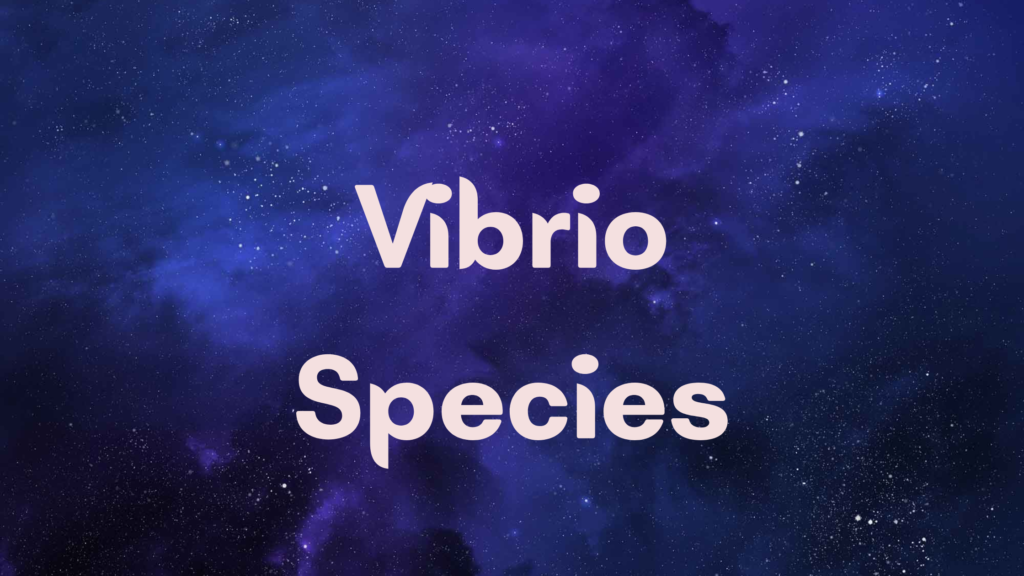What are Vibrio Species? 🦠🌊
Vibrio is a group of bacteria commonly found in warm, salty, or brackish water environments like coastal waters and estuaries. Some species cause infections in humans, often related to seafood consumption or exposure to seawater.
Common Vibrio Species and Their Diseases
- Vibrio cholerae
- Causes cholera, a severe diarrheal disease characterized by watery diarrhea (often called “rice-water stools”), dehydration, and electrolyte imbalance.
- Transmitted through contaminated water or food.
- Vibrio vulnificus
- Causes severe wound infections, bloodstream infections, and sometimes fatal sepsis, especially in people with weakened immune systems or liver disease.
- Infection can occur through open wounds exposed to seawater or by eating raw or undercooked shellfish.
- Vibrio parahaemolyticus
- Causes gastroenteritis with diarrhea, abdominal cramps, nausea, vomiting, and fever.
- Usually from eating raw or undercooked seafood.
How Are Vibrio Infections Transmitted?
- Eating raw or undercooked seafood (especially shellfish like oysters) 🦪🍽️
- Exposure of open wounds to warm seawater 🌊🦶
- Drinking contaminated water (mostly for Vibrio cholerae)
Diagnosis
- Stool, blood, or wound cultures to identify Vibrio bacteria
- Patient history of seafood consumption or water exposure
Treatment
- Rehydration is critical, especially for cholera
- Antibiotics for severe infections or wound infections (like doxycycline, ciprofloxacin)
- Wound care for skin infections
Prevention
- Avoid eating raw or undercooked seafood
- Properly cook seafood to safe temperatures
- Avoid exposing open wounds to seawater or wear protective coverings
- Drink clean, treated water
